[
Although Oldstyle Tales primarily focuses on the elegant horrors found in classic literature, today we’ll be grafting a 21st century cartoon into our artistic family – one which couldn’t be a more perfect fit with our aesthetic scope. Riffing on The Wizard of Oz and Alice in Wonderland by way of Edward Gorey and Betty Boop, this short series follows two brothers – pilgrims lost in a twilight universe shadowed by existential gloom and aglow with eccentric joy.
Set on Hallowe’en Night (at least in our dimension) it beautifully expresses the complex and often conflicting emotions — anticipation and anxiety, humor and Horror — that are so universal to children’s experience of that liminal holiday. As such, it is dominated by bittersweet nostalgia that haunts its viewers for days and weeks to come.
Shifting effortlessly between gentleness and savagery, playfulness and profundity, its disarming allegory is one of the most effective literary vehicles for a robust spiritual philosophy since Harry Potter. Viewers often find themselves strangely bonded to its relatable protagonists as they navigate the delights and perils of The Unknown — an introspective limbo whose misty, moral twilight challenges reality and inverts the narcissistic values of our neurotic, self-oriented society.

I’m referring, of course, to Patrick McHale’s critically-acclaimed 2014 miniseries Over the Garden Wall (based, in turn, on his cryptic 2013 short, Tome of the Unknown). This show broods in macabre atmospherics (borrowed from Victorian Horror, Edgar Allan Poe, and early weird fiction) which are refreshingly balanced by wholesome helpings of nostalgic Americana, unapologetic kitsch, and a deliciously self-conscious sense of humor.
Richie Holinsger describes the aesthetic experience of watching it in the following terms:
“[it] is a lovely concoction of yellows, oranges, browns, and similar rustic, earthy colors as it introduces us to a world that seems to live within a story book found in a musty old attic. The primary focus of the show’s aesthetic certainly seems to be an association with classic Americana with some episodes playing with the more lighthearted, Romantic literary influences of the time while simultaneously maintaining the common good-vs-evil elements of such work between the two boys and The Beast who, appropriate to old folk legends and stories told to frighten children, wants to lure them into the woods.
“Many ideas crash together to create the show’s overall aesthetic, though, as the show proves itself to be creepy, unnerving, and sometimes downright scary, and then charming, elegant, and nostalgic as the writing dances between haunted gothic houses reminiscent of Poe, paddle boats on a river manned by frogs who play ragtime music, Aesop’s fables-inspired old crones, and even a few good thematic surprises toward the end of the show…”

(Clearly we share an aesthetic affinity,
right down to our logos…)

Although this program is nearly a decade old, I wasn’t fortunate enough to enjoy it until last month. Last October my sister first brought it to my attention (thanks, Faith!). She was especially (and rightfully) sure that I would enjoy the Pottsfield episode, whose anthropomorphic-pumpkin villagers are modelled on the same vintage, 1920s Hallowe’en cards with which I decorate my house every October. At the time, however, we didn’t have the right streaming service to watch it, so I put it off until that platform merged with one we already had, and one of my wife’s friends recommended that she watch it (thanks, Gabrielle!). By that point, OtGW clips and art were also showing up on both of our social media accounts, and we decided to take the converging, cosmic hints and finally look it up.

I recommended that we pace ourselves and watch the episodes in batches, but my wife wasn’t so sure, and — sure enough — we ended up binging all 10 episodes in one sitting; it was the best piece of media I had seen in three years.
Although reams have already been covered in type analyzing this poignant little miniseries, I want to do my own part to help unpack its nostalgic allusions and cryptic philosophy. So, without further, delay, join me in crossing over the garden wall…
“All That Was Lost is Revealed”:
A 3-Part Series Analyzing Over the Garden Wall‘s
Macabre Beauty, Joyful Whimsy,
and Profound Philosophy
PART ONE
As you can tell, I have loads of strong opinions about this subject, so let’s start off with something fun and innocuous: the artistic influences that give this media is unique, eccentric character. One of the universal fawnings that fans and critics share about OtGW is “their love for the atmosphere and art design of Over the Garden Wall, specifying that it manages to feel extremely familiar while remaining deceptively hard to identify what is so familiar about it.” If you have even passing relationship with old cartoons, music, stories, or art (say, if your grandparents had some vintage children’s books in their house or a compilation VHS of retro animation shorts) many, many moments in the series will seem familiar.
You might notice a recurring feeling that you’re meant to get a joke, and might find yourself chuckling — even if you can’t quite put your finger on the references. Even if you aren’t familiar with McHale’s niche cultural allusions, they likely seem warm and homey, as if rooted in some vestigial, collective memory (like a half-remembered sniff of your great-grandpa’s cologne or a vaguely-recognized pattern from a quilt patch in your great-aunt’s sewing room). So what is it about Over the Garden Wall that seems so nostalgic and comforting? In a phrase: lovingly currated vintage aesthetics.
VINTAGE VISUAL INFLUENCES
(ART, ANIMATION, CULTURE, AND KITSCH)
First, we’ll touch on some general artistic inspirations that leave a subtle fingerprint on every episode before digging into the specific influences on each individual chapter. The following illustrators, books, and animators contributed to OtGW’s uniform aesthetic:
-
Edward Gorey. This American illustrator was famous for his macabre whimsy, elegant but eccentric style, black humor, and Victorian/Edwardian aesthetics. He often favored stories about endangered children who are forced to navigate their way through elaborate, Halloweenish perils while the adults in their lives are conspicuously absent. His illustrations consistently wed morbid bleakness with a dry sense of humor.
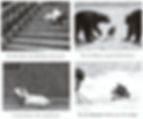


-
Gustave Dore. This French illustrator was known for his pristine, highly-detailed, chiaroscuro engraving illustrations of classic literature, ranging from Dante’s Inferno and the Bible to Grimm’s Fairy Tales and the Tales of Poe. His subject matter was far less whimsical than Gorey’s, and was often frightening and even gruesome in nature, though undeniably gorgeous to look at.
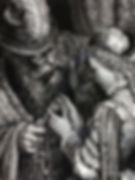
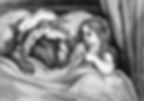
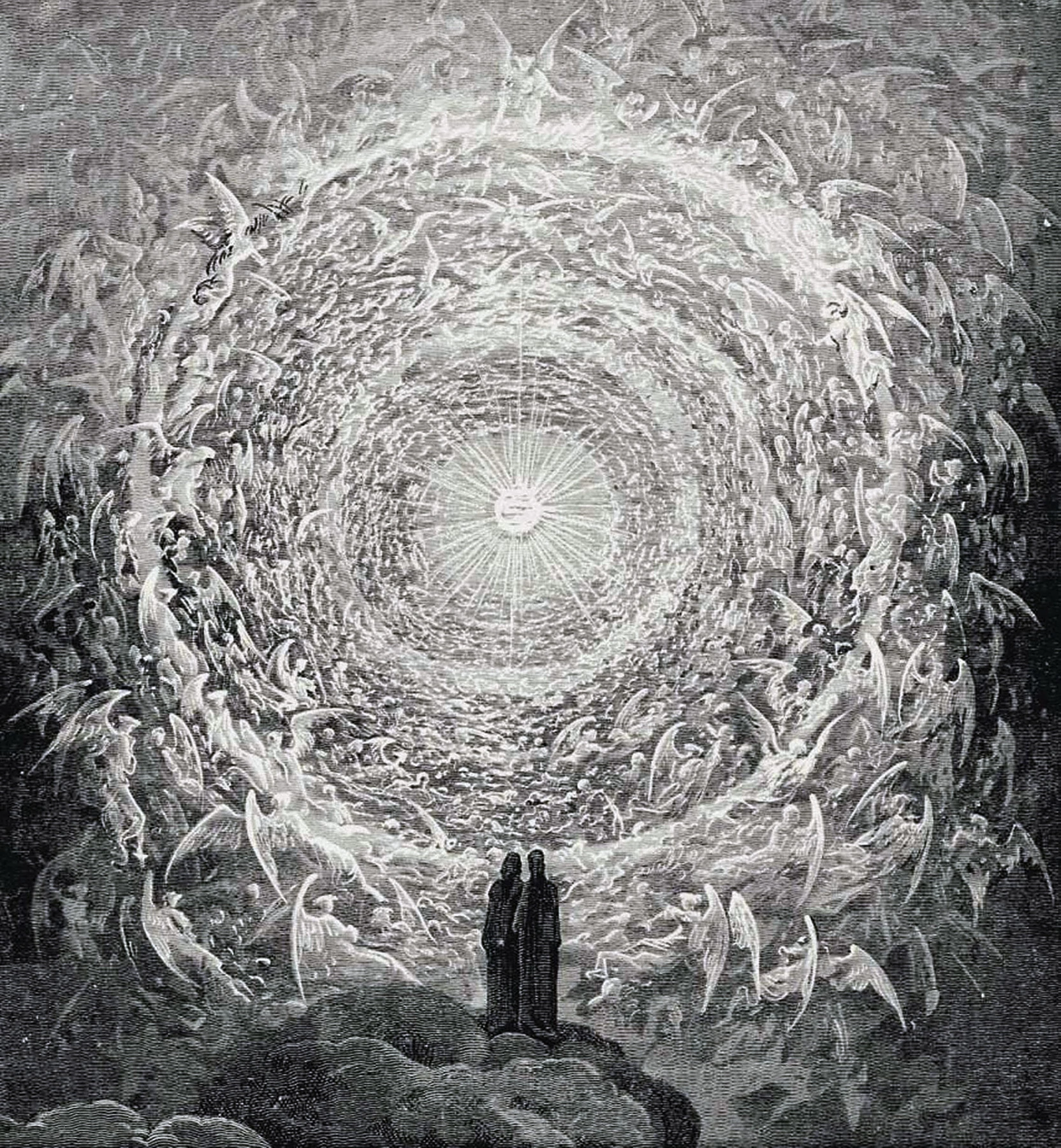
-
Classic children’s literature. From Alice in Wonderland and The Wizard of Oz to The Lion, the Witch, and the Wardrobe and Grimm’s Fairy Tales, the themes, aesthetics, and tropes of classic children’s stories — which frequently follow lost children on a quest to understand the world, grow in wisdom, and return to the stability of home — pervade the entire series. Much more on this later.
-
Classic literature about wandering pilgrims. Adult literary fiction — especially fiction about exiled heroes on epic quests rife with spiritual self-discovery — is a consistent influence with liberal allusions to Dante’s Inferno, The Grapes of Wrath, The Odyssey, Pilgrim’s Progress, The Faeire Queene, and The Gospels cropping up in nearly every episode. More to come.
-
Vintage toys and holiday postcards. More on this down below, but to suffice, Victorian, Edwardian, and Interwar toys, postcards, and children’s books are famous for their camp, kitsch, and anthropomorphic animals, vegetables, and toys. They were somehow simultaneously hilarious and frightening, cute and creepy – statements which could easily describe OtGW. McHale specifically credits turn-of-the-century Halloween postcards, McLoughlin Brothers toys and art, and illustrations from the 1912 children’s book, The Complete Optimist. These kitschy but eerie vintage aesthetics pervade the series, lending it a retro vibe that tips back and forth between comforting and uncanny.

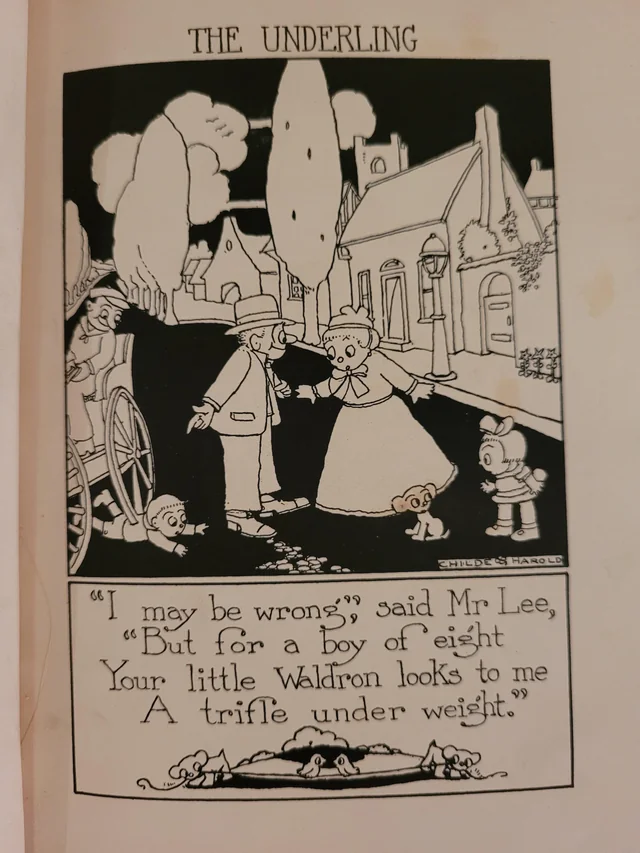
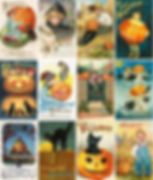
-
Ub Iwerks, Walt Disney, and Max Fleischer. One of the most direct and obvious allusions throughout OtGW is its loving treatment of early 1930s cartoons. To be sure, it also borrows from more contemporary sources – Studio Ghibli movies (viz., Spirited Away, The Cat Returns, Howl’s Moving Castle, Princess Mononoke, and My Neighbor Totoro), The Rocky Horror Picture Show, and even Breaking Bad (McHale cited its organic, unpretentious plot structure) – but few critics have been unable to avoid commenting on its devoted homage to early, American animation.
-
Iwerks and Disney worked together early on before parting ways in the 30s, and both of them produced whimsical cartoons about plucky, optimistic characters beset by overwhelming and often frightening troubles, but overcoming due to their grit and imagination.
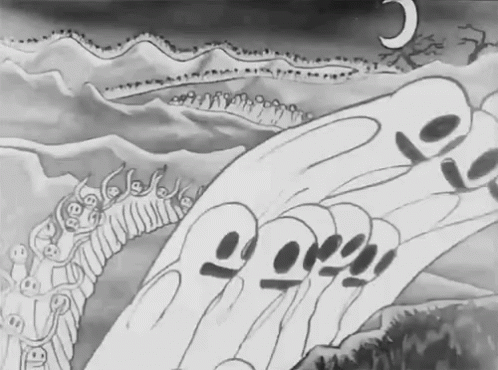

-
Fleischer is best remembered for Betty Boop and Popeye the Sailor, and both series tended to blend risqué humor with macabre threats and aesthetics. These three animators heavily influenced the visuals, music, dialogue, themes, characters, and animation style of the entire series.
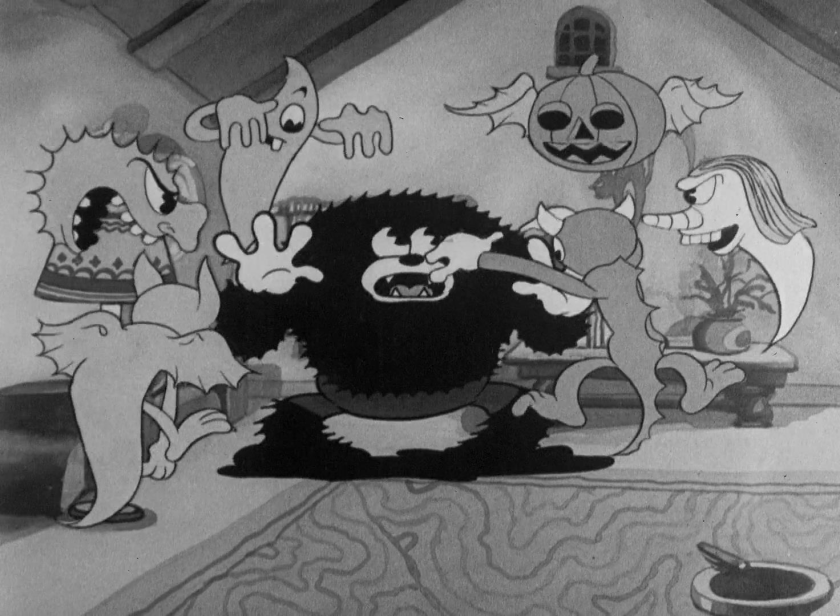
Now, let’s unpack each episode’s specific artistic influences from cartoons, films, illustrations, toys, folklore, and history.
THE OPENING SEQUENCE
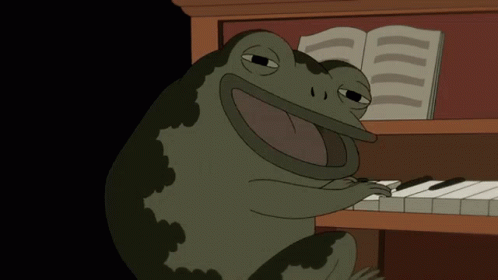
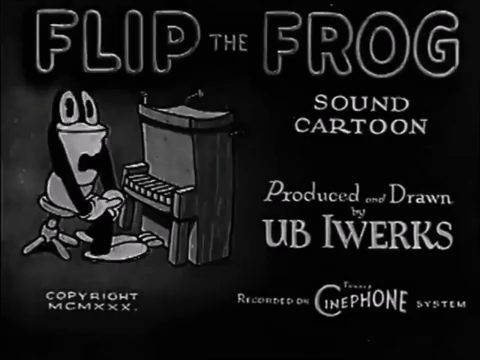
EP. 1 – THE OLD GRIST MILL
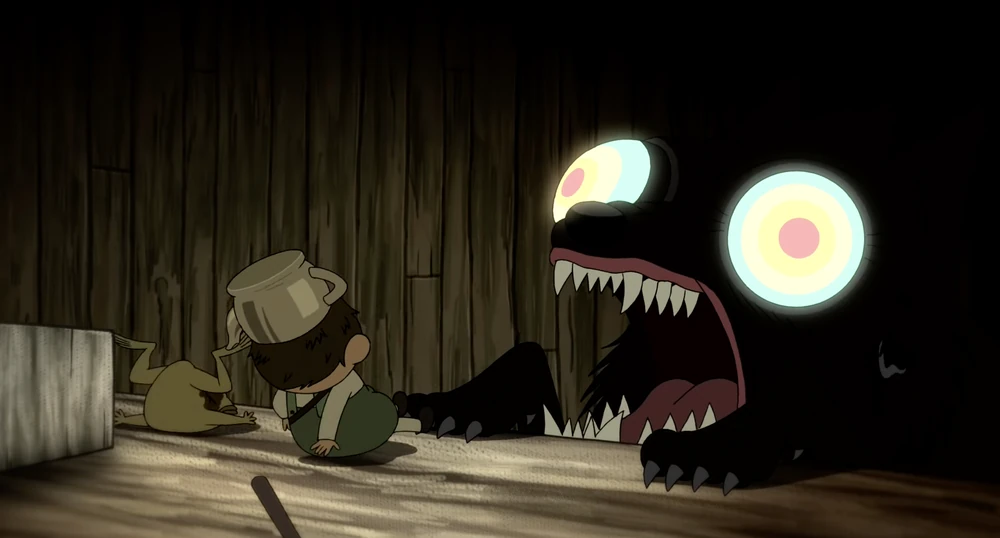
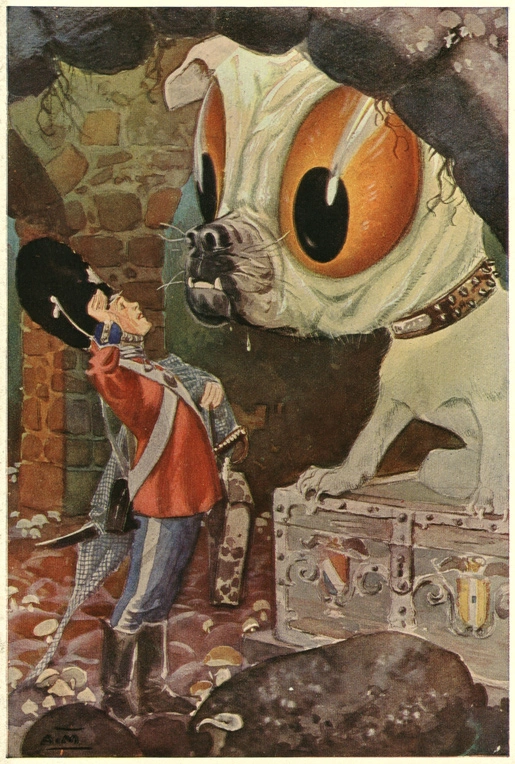
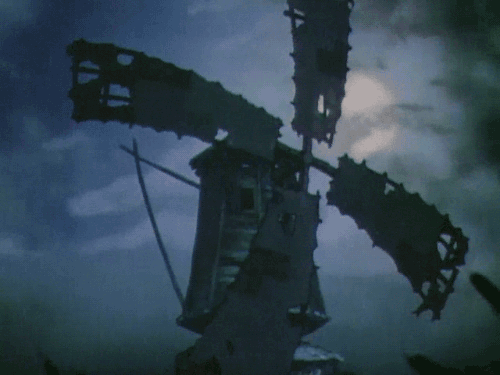
-
The frightening, supernatural backstory delivered by an ambiguously-trustworthy old man to lost trick-or-treaters (…at a fireplace in an abandoned building in the woods) is a nod to the Garfield’s Halloween Adventure special
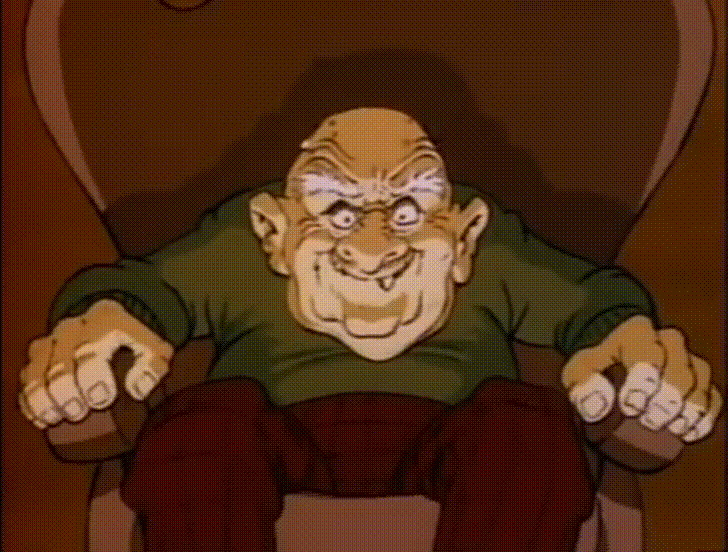
EP. 2 – HARD TIMES AT THE HUSKIN’ BEE

-
The anthropomorphic pumpkin-people come from campy, vintage Hallowe’en postcards which were highly popular in America from 1890s to the Great Depression. These postcards were often insanely whimsical, depicting pumpkin-people driving in watermelon cars, riding on black cats, dancing with vegetable people, and carving other pumpkins (On a personal note, I’m a massive fan of kitschy, turn-of-the-century Hallowe’en aesthetics, and my wife and I decorate our house with this art every October).
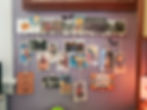
(Some of the vintage Hallowe’en cards with which we decorate our house each October)
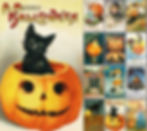

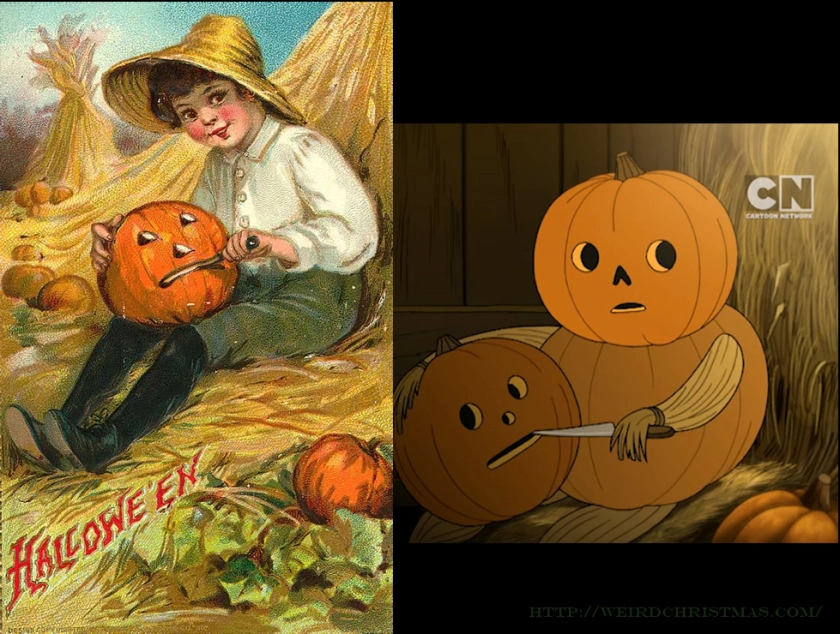
(Vintage Card) (OtGW Pumpkin-person)
-
The idea of being trapped in an isolated, rural village which may be harboring a violent, pagan cult is an allusion to a number of Horror films, especially Children of the Corn and The Wicker Man
-
The aesthetics of an American religious sect living in an isolated woodland village, delighting in 19th century pastimes (husking bees) and music (Sacred Harp shape-note a capella singing) with a sinister secret is likely borrowed from M. Night Shyamalan’s maligned masterpiece The Village


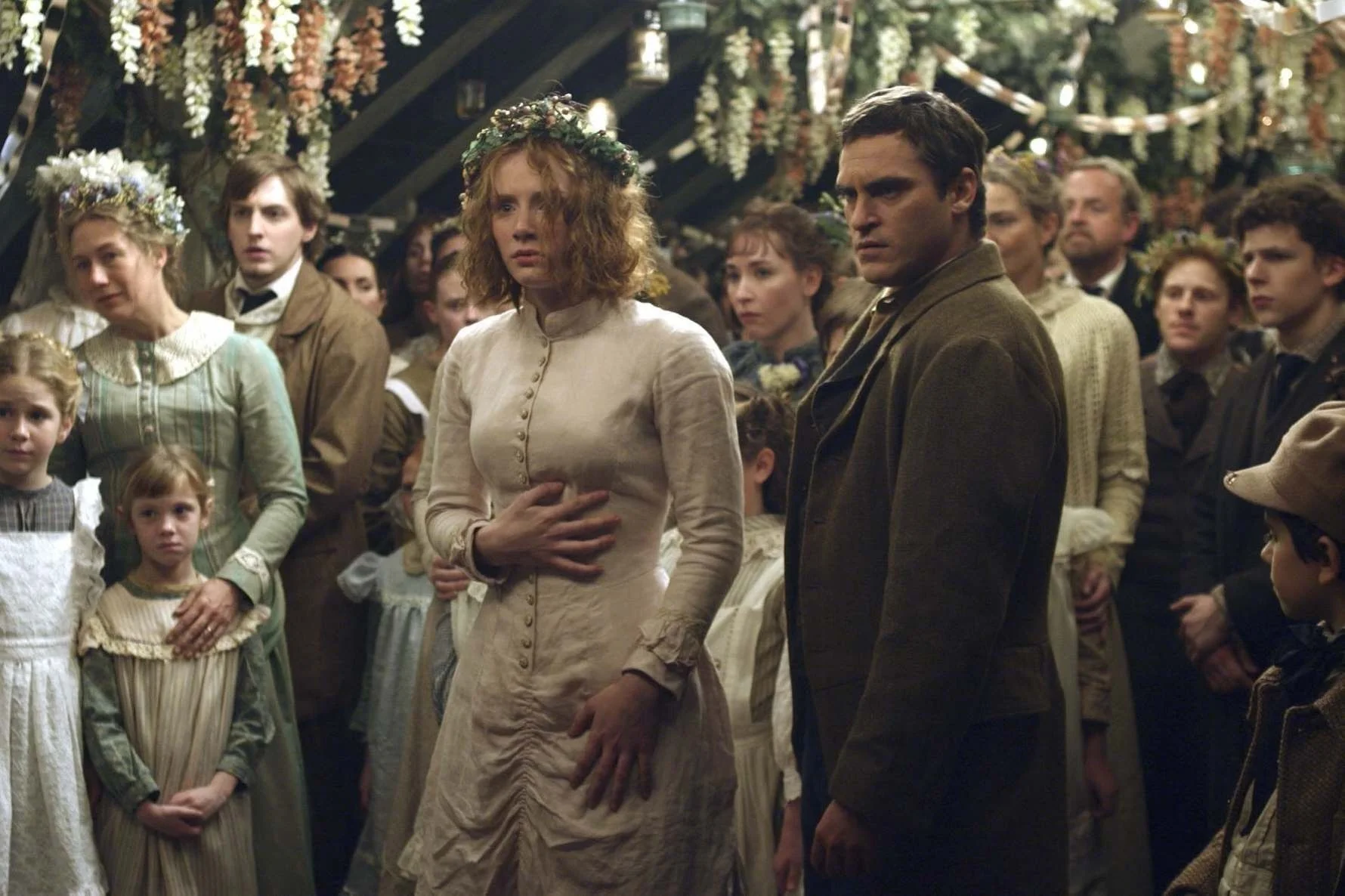
EP. 3 – SCHOOLTOWN FOLLIES
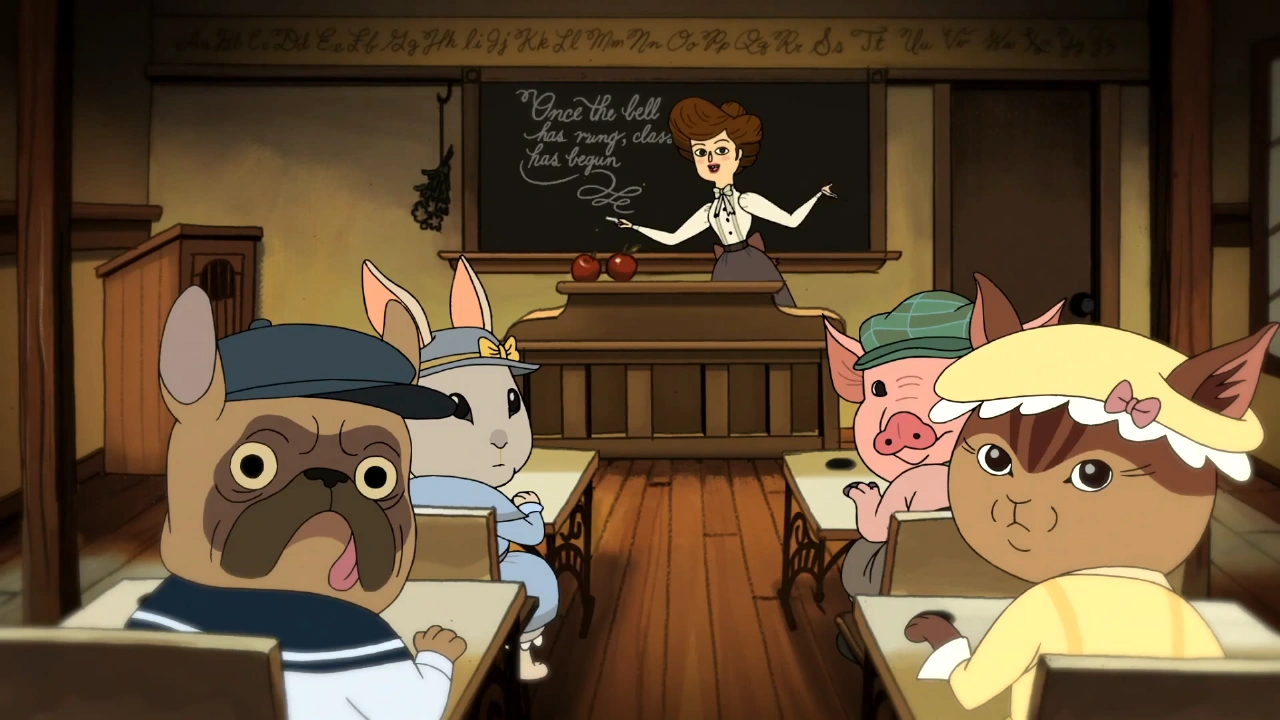
-
The dressed-up animals are allusions to the illustrations of Beatrix Potter’s children’s books about animals like Peter Rabbit and Jemima Puddle-Duck, who dress like Victorian Englishmen, stand on two legs, and live like humans, but are otherwise drawn realistically
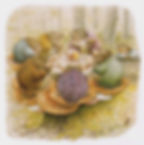
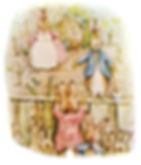

-
Greg’s pursuit of the “gorilla” is a nod to the Little Rascals’ short “Bear Shooter”
-
The song “Potatoes and Molasses” and the unhappy school are obvious homages to Shirley Temple’s 1935 movie Curly Top (viz. the “Animal Crackers in my Soup” song and the concept of a drab orphanage run by an over-worried elderly man being enlivened by a young, cheery outsider)
EP. 4 – SONGS OF THE DARK LANTERN

Nearly all the characters come from 1930s Betty Boop, Walt Disney, and Ub Iwerks cartoons.
-
The pouty, Brooklynese Tavern Keeper is based on Betty Boop, who, in turn, was based on singer Helen Kane…
-
The comforting, folksy Toy Maker is based on a number of avuncular, turn-of-the-century singers and comics such as Cal Stewart, Edward Meeker, Dan W. Quinn, and Billy V. Van known for their folksy humor and pratter songs. He may also be at least partially inspired by the eccentric but kindly character of Jack Frost in the eponymous 1934 Ub Iwerks short.

-
The Highwayman is based on bandleader and voice actor Cab Calloway’s characters in the Betty Boop cartoons — specifically, his ghostly walrus in “Minnie the Moocher” and his spectral clown in “Snow-White,” both of whom croon wailing songs of doom that unsettle the protagonist (see the above Betty Boop video to watch “Minnie the Moocher”)
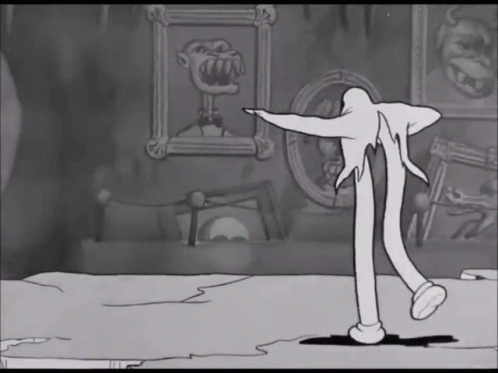
-
Wirt’s desperate gallop through the dark woods – lantern in hand on a grey horse – is an allusion to several cartoon adaptations of Washington Irving’s The Legend of Sleepy Hollow, particularly Disney’s 1949 Bing Crosby version and Rabbit Ears’ 1988 Glenn Close version

EP. 5 – MAD LOVE
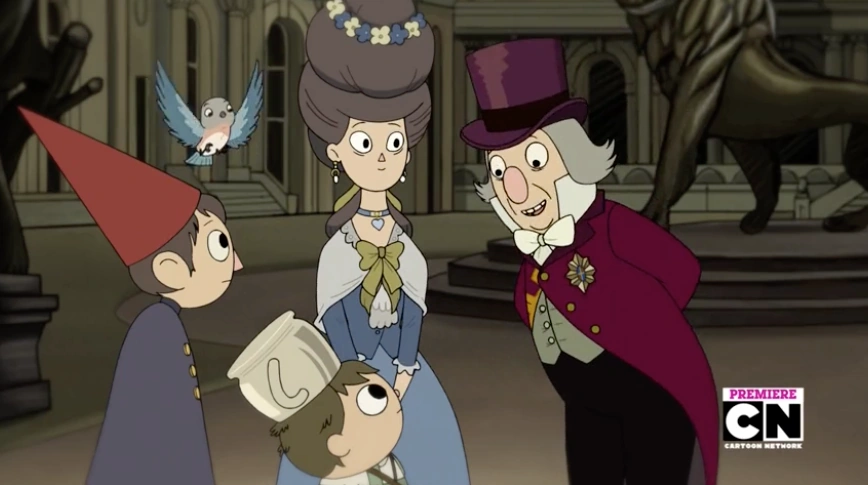
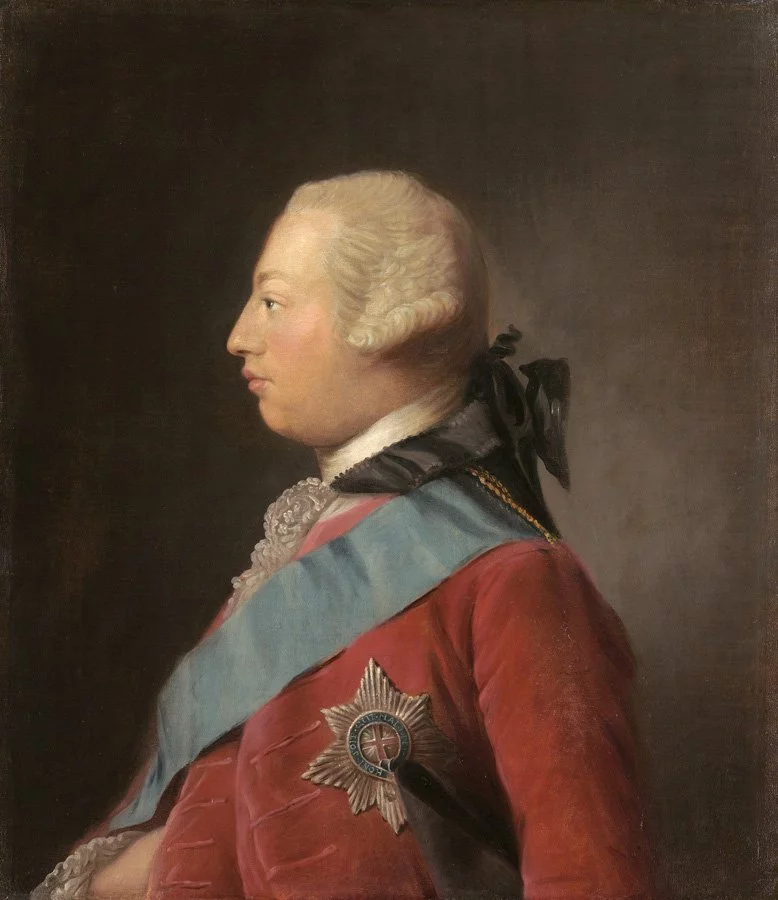
-
Marguerite is based on George’s contemporary, the French queen, Marie Antoinette. The choker around her neck may be an allusion to Washington Irving’s French Revolution ghost story “The Adventure of the German Student,” wherein the titular scholar beds a beautiful woman who refuses to remove her black, velvet choker. In the morning, he is driven mad upon finding that she was the corpse of a victim of the Revolution, and that the choker had held her head to her body.
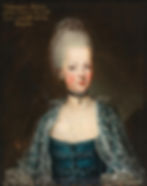
-
Marguerite’s manor resembles the French palace of Versailles and has a Baroque, rococo style (ornate, luxorious architecture suggestive of the late-17th to early-18th century)
-
As Wirt observes, Endicott’s manor is Georgian (Roman-influenced British architecture suggestive of the mid-to-late 18th century)
EP. 6 – LULLABY IN FROGLAND

-
The anthropromorphic frogs are lifted from the kitschy “frog” art popularized by the toys, sheet music, books, and postcards popularized by the McLoughlin Brothers toy company which thrived from the 1860s to the 1920s.
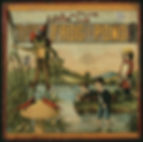



-
The stacked kids posing as one adult in an oversized coat comes from the Little Rascals shorts
-
Adelaide’s appearance – as a withered but dangerous witch living in a strange house in the woods – is an allusion to Russia’s Baba Yaga folktales
EP. 7 – THE RINGING OF THE BELL

There are many parallels in this plot to Hayao Miyazaki’s 2001 Academy Award-winning anime masterpiece Spirited Away:
-
A young girl is made to work as a servant for an elderly witch
-
The witch has a massive, oversized head and bulging eyes
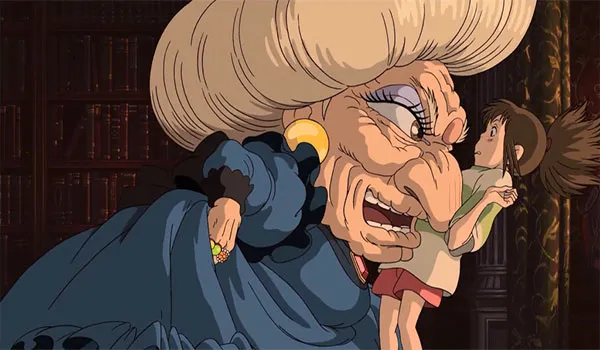
-
The witch has a sister who is also a witch: one of them is good and one is evil
-
The plot involves a shapeshifting spell which binds a young person in an obligation to regularly transform into a supernatural being (a dragon in the original; a demonic cannibal in OtGW)
-
A shapeshifter is cursed to impulsively consume living beings even though they are innately good
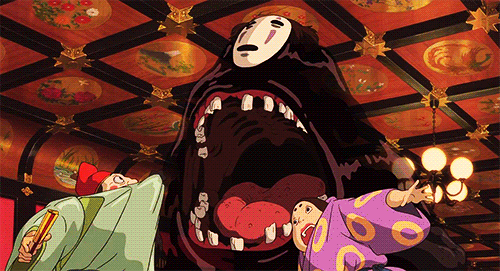

(No-Face, the possessed River Spirit in Spirited Away)
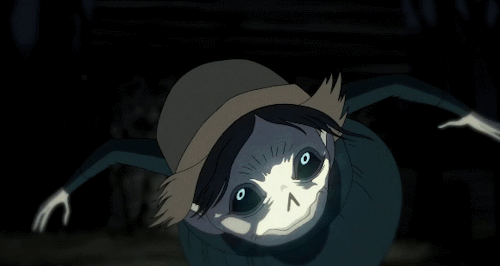
(The demon in OtGW)
-
The shapeshifter is freed by a mortal of the opposite sex with whom they fall in love
-
The young lovers part ways at the end, with the shapeshifter staying behind to help the good witch continue her work


EP. 8 – BABES IN THE WOOD

-
The title, plot, and imagery are borrowed from the fairytale “Babes in the Wood” (two young siblings are abandoned by their parents in the woods where they starve to death, after which the birds and woodland creatures tenderly cover their bodies with leaves and they ascend to heaven) along with the 1933 Disney cartoon adaptation
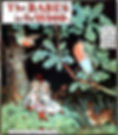
-
The prayer and vision come from Hansel and Gretel: An Opera Fantasy (1954), itself an adaptation of the famous opera which is best remembered for
-
The flying fantasy sequence is an allusion to the Disney cartoon “Wynken, Blynken, and Nod” (1938) wherein the three eponymous boys fly off into the sky in their dreams and are buffeted by the wind
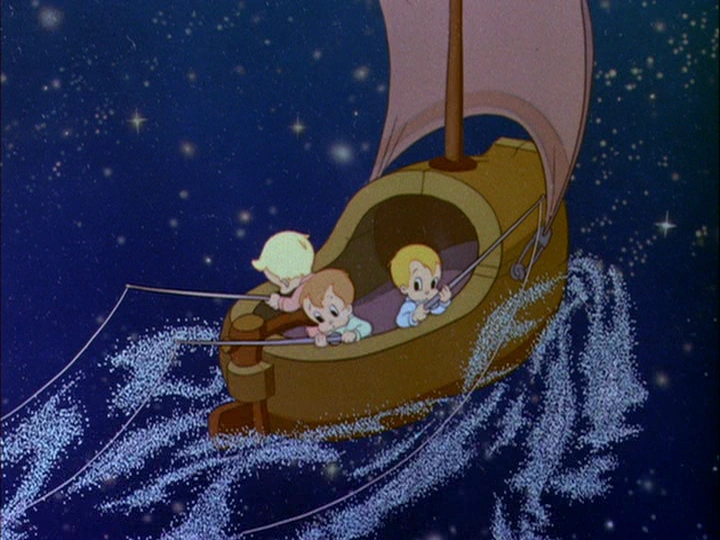
-
Cloud City – with its “rubber hose” animation, perky style, and welcoming, whimsical inhabitants – is taken from the early Disney cartoon, “Alice’s Wonderland” (1923)

-
There are also clear parallels with the Munchkin welcoming committees in The Wizard of Oz (1939)
-
The villainous, personified Old North Wind is an homage to Cab Calloway’s eponymous, creepy character in the Betty Boop cartoon “The Old Man of the Mountain” about a sinister, old man who terrorizes villagers and lecherously chases Boop (1939)
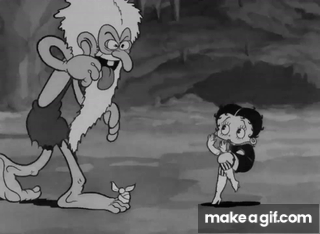
-
The shot of Greg walking off with the Beast to trade his life for Wirts comes from The Lion, the Witch, and the Wardrobe
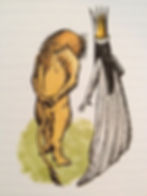

EP. 9 – INTO THE UNKNOWN

-
The contemporary sequence takes inspiration from a number of more modern sources, including Hallowe’en specials like It’s The Great Pumpkin, Charlie Brown and ’80s coming-of-age movies with romantic subplots (usually about a shy outsider who struggles to fit into his high school’s social nexus, has a hopeless crush, and ultimately learns to accept himself) like Say Anything, Weird Science, Stand By Me, The Lost Boys, The Goonies, Back to the Future, and Pretty in Pink.

-
The final segment where Wirt wakes up huddled in the safety of Beatrice’s family tree during a violent blizzard, but is compelled to leave its safety to trudge through the snow and wind are likely allusions to the 1934 Ub Iwerks cartoon, “Jack Frost,” where a bear cub is caught in a blizzard while all the other forest animals are snug and safe in their tree houses.

EP. 10 – THE UNKNOWN

Once again, the brunt of this episode is an original creation, but there are several visual allusions here:
-
Greg’s deathlike sacrifice and his outstretched posture, affixed to the tree, are obvious allusions to a number of Christ-figure deaths in film and literature (much more on that in the second post) among which are Aslan in The Lion, the Witch, and the Wardrobe, Luke in Cool Hand Luke, Simon in Lord of the Flies, Jim Casy in The Grapes of Wrath, Frodo in The Lord of the Rings, Nausicaä in the eponymous Miyazaki cartoon, Superman in Superman Returns, Ellen Ripley in Alien 3, and many more.
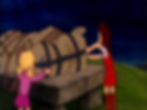
(Aslan’s violated corpse is discovered on the sacrifical stone table after trading his life for the trecherous Edmund)
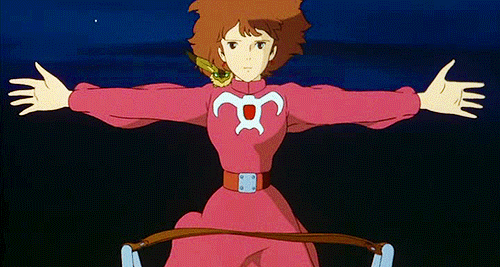
(Nausicaa sacrifices herself to stop the self-destructive war
between humanity and the Ohmu)

(Cool Hand Luke suffers for the sake of preserving
his fellow prisoners’ dignity and hope)
-
Wirt and Greg’s recovery in the hospital, surrounded by friends, is a nod to the ending of The Wizard of Oz, where Dorothy wakes up from her concussion and finally accepts that “there’s no place like home”

VINTAGE MUSICAL INFLUENCES
(RUSTIC HYMNS, DUSTBOWL FOLKSONGS,
DIXIELAND RAGTIME, AND TIN PAN ALLEY)
Musically, the series takes its cue almost exclusively from 19th and early 20th century Americana. Indeed, almost every song can be paired up with a specific tune or style of song from these time periods. Most particularly, the writers seem to favor the Interwar period of jazz and folk music, and the songs frequently take inspiration from the hits of the Gilded Age, Progressive Era, Roaring Twenties, and Great Depression.
The score is rich with detailed musical allusions to the repertoire of American folk music, Tin Pan Alley hits, and the Great American Songbook. Having such a direct and authentic connection to the musical source material is part of what has made OtGW so unforgettable and unique. This is the same reason that similarly-sourced soundtracks from movies like O Brother Where Art Thou? (which highlights Depression Era Southern Gospel), Chicago (Tin Pan Alley and Vaudeville), and The Village (rustic, Shaker-style American folk music) develop cult followings and remain popular well after their heyday.
I’ll quickly illustrate this by connecting some of the more popular songs to their musical inspirations:
-
“Patient is the Night” borrows its breathy, baritone vocals, plaintive whistling, and solemn, romantic style from two of the “first global cultural icons,” “White Christmas” crooner Bing Crosby and my fellow Hoosier, “Heart and Soul” composer, Hoagy Carmichael. Crosby’s songs “Now is the Hour,” “Where the Blue of the Night Meets the Gold of the Day,” “Stardust,” and “Skylark” are clear influences on this tune. The last two of these were written and recorded by Carmichael, whom McHale specifically credits as an inspiration. In fact, “Stardust” lends OtGW its title from the lyric: “Beside the garden wall … the nightingale tells his fairytale of Paradise where roses grew.”

(Crosby)
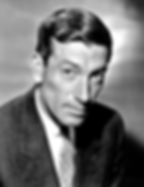
(Carmichael)
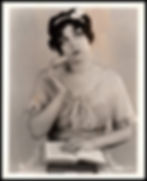

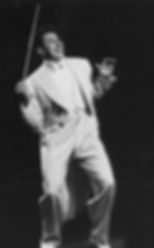
-
“Potatoes and Molasses” — along with the entire sequence — is a direct spoof on Shirley Temple’s plucky song “Animal Crackers in My Soup” from her 1935 movie Curly Top, about a cheery little kid who brings hope to a dreary orphanage with her optimistic perspective.
-
“The Beast is Out There” is another Helen Kane allusion (cf. “Dangerous Nan McGrew”), and inspired by another Bing Crosby song: Brom Bones’ frightening, fireside ballad, “The Headless Horseman” in the 1949 adaptation of “The Legend of Sleepy Hollow”.

-
The jangly jig, “A Courting Song,” is a spoof on fast-paced, turn-of-the-century “patter songs” (think the “Major General’s Song” from Pirates of Penzance) and folksy comics known for their avuncular, “old rube” characters. I wrote to the composer/singer, Frank Fairfield, who was generous enough to confirm that it was directly inspired by a number of sources, including comic Cal Stewart’s “Uncle Josh” character, and bouncy patter songs like Billy V. Van’s “Mickey the Pum-Pum Man,” Dan W. Quinn’s “I Want to Go Tomorrow,” and Mick Moloney’s “Clancy’s Wooden Wedding.”

-
“Adelaide Parade” takes its cue from “The Happy Wanderer,” a popular camping song that you might remember from its refrain: “Val-de-ri, val-de-rah, my knapsack on my back.”
-
“Send Me a Peach” is another Bing Crosby allusion (betrayed by the husky “bum-buh-bums” in the background, ukelele, sentimental mood, and the Southern theme) (cf. “Sleepy Time Down South,” “Moonstruck,”“Paradise”).
-
“Old North Wind” is another nod to Cab Calloway’s gloomy, Dixieland crime ballads (cf. “St. James Infirmary,” “Kickin’ the Gong Around”) and fans of The Nightmare Before Christmas will likely realize, if they didn’t already know, that Calloway was also the inspiration for the villainously charismatic Oogie Boogie.
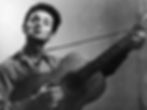
Finally, if you enjoyed the ’20s and ’30s sound of the OtGW soundtrack and you’d like to add this unique, vintage style to your personal Hallowe’en listening, allow me to recommend my favorite Hallowe’en album, which I’ve been playing each October since 2012 — a compilation of macabre songs by Cab Calloway, Rudy Vallee, Henry Hall, and other Depression-era crooners called Halloween Classics: Songs that Scared the Bloomers Off of Your Great-Grandma.
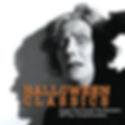
VINTAGE LITERARY INFLUENCES
(CHILDREN’S ADVENTURES, DANTE’S INFERNO,
BILDUNGSROMANS, AND CLASSIC Horror)
The overarching structure – a story about children lost in an alternate dimension, trying to find their way home, and befriending a cast of fantastical misfits who help them mature and grow along the way – is most obviously modeled on Alice in Wonderland, The Lion, the Witch, and the Wardrobe, and The Wizard of Oz. It also borrows inspiration from much darker and older allegorical bildungsromans: Bunyan’s Pilgrim’s Progress, Dante’s Divine Comedy, and Homer’s Odyssey, all of which follow the spiritually-charged journey an exiled pilgrim desperate to get home while he navigates a fantastical, foreign world bristling with perils, monsters, and challenges. All three end with the pilgrim finally arriving at his destination, torn down and rebuilt into a new, more heroic and spiritually-grounded version of himself.
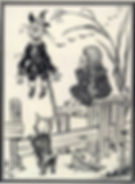
(Dorothy — the Pollyanna-ish Greg-character in Oz — and her pet dog meet their first ally, the Scarecrow)

(Lucy and the Beatrice-like Mr. Tumnus — a remorseful traitor — travel through the sinister woods in Narnia)

(Virgil guides Dante through the Afterlife in the Divine Comedy. Note that Dante is searching for his lost love
— a deceased woman named Beatrice —
the name of OtGW‘s bluebird antihero)
On the more whimsical side, there are obvious connections to Swift’s Gulliver’s Travels, Spenser’s The Faeire Queene, and Shakespeare’s The Tempest, each of which involve an exile’s adventures in a fantastical world who is plagued by strange and supernatural obstacles during their attempt to be restored to their previous status.

(St. George — the Wirt-character of The Faerie Queene — on his melancholly quest for redemption)
OtGW’s folksy, American Odyssey – complete with philosophical, Okie axioms (“Ain’t that just the way?” “Everyone’s got a torch to shine and this here’s mine”) – has obvious parallels with Steinbeck’s The Grapes of Wrath, where Wirt plays the questioning, frustrated searcher, Tom Joad, and Greg stands in for the spirit-filled, humanity-loving Christ-figure, Jim Casy.
Aesthetically, a major influence on the grim atmospherics and plot details is the Victorian and Edwardian traditions of classic Horror – the stories which we usually analyze on this blog. The very idea of the Unknown – the dark, wooded, psychologically symbolic territory in which Wirt and Greg are lost – has obvious parallels with the Dark Romanticism of Nathaniel Hawthorne (“Young Goodman Brown,” “Roger Malvin’s Burial”), Washington Irving (“The Legend of Sleepy Hollow,” “Rip Van Winkle”), Edgar Allan Poe (“Ulalume”), Algernon Blackwood (“The Wendigo,” “The Valley of the Beasts”), and Ralph Adams Cram (“The Dead Valley”), among others.
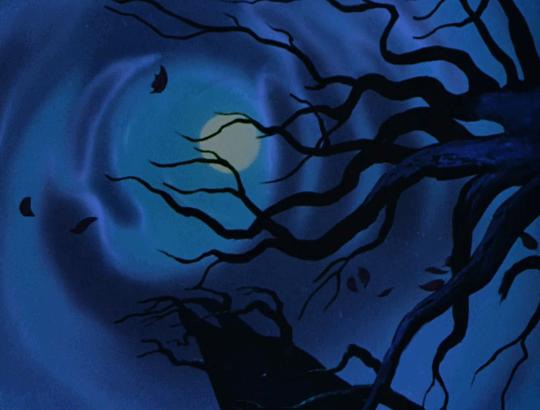

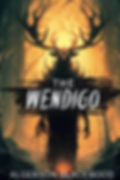
Many of the characters and communities Wirt and Greg encounter are tropes of Classic Horror: the mentally unstable aristocrat driven mad by a tryst with a ghostly woman haunting his manor, the alluring maiden who harbors a supernatural secret that spells doom to her lovers (“The Great God Pan,” “Eyes of the Panther,” “Ancient Sorceries,” “John Barrington Cowles,” etc., etc.) and mysterious adventures in a fantastical world which are revealed to have been fugue states or hallucinations in a twist ending (“An Occurrence at Owl Creek Bridge,” “The Key to Grief”).


We are now getting dangerously close to touching on OtGW‘s heavy moral and philosophical themes which will be the subject of the next post, so — rest assured — if you wanted to hear a deeper literary analysis of the plot, we will pick up where we are now leaving off.
Check back with us next week for our second part of this three-part series, as we delve into OtGW’s profound, spiritual philosophy…
FURTHER ONLINE RESOURCES
112 Things you Actually Missed in Over the Garden Wall (YouTube)
113 More Things you Actually Missed in Over the Garden Wall (YouTube)
59 Things YOU Noticed in Over the Garden Wall! (YouTube)
Going Over the Garden Wall (an indispensable Tumblr blog dedicated to the series)
Here’s a Dark, Funny, and Beautiful Show You Should Watch this Weekend
Into the Unknown: A Critical Examination of Over the Garden Wall (YouTube)
The Magic of Over the Garden Wall: A Retrospective (YouTube)
Media and Music: ‘Over the Garden Wall’ has the Perfect American Gothic Soundtrack for Fall
One Good Thing: This Animated Miniseries Perfectly Captures the Loneliness of Autumn
“Over the Garden Wall”: A Bizarre Love Letter to Forgotten America
“Over the Garden Wall”: A Favorite (New) Yearly Tradition
“Over the Garden Wall” and On a Sacred Journey into the Unknown
“Over the Garden Wall” and Vintage Postcards
“Over the Garden Wall”: A Strange, Spiritual Epic
“Over the Garden Wall”: A Sweet, Strange Journey into the Unknown
“Over the Garden Wall” – Building an Aesthetic
“Over the Garden Wall”: Children, Death, and the Mystery of the Unknown
“Over the Garden Wall” Creator Has Plans for a “Spiritual Successor” to his Cult Classic
Symbolism in “Over the Garden Wall”
The Woodsman’s Dilemma – Over the Garden Wall Analysis (YouTube)
#Garden #Walls #Vintage #Visual #Musical #Literary #Influences #Detailed #Analysis



More Stories
‘In a Violent Nature’ – Retro Lobby Card Teases Slasher Movie’s UNRATED Theatrical Release
Chicago’s Music Box Theatre Announces Full Schedule For Weeklong GODZILLA vs MUSIC BOX Series This June! –
Dagr (2024) Review